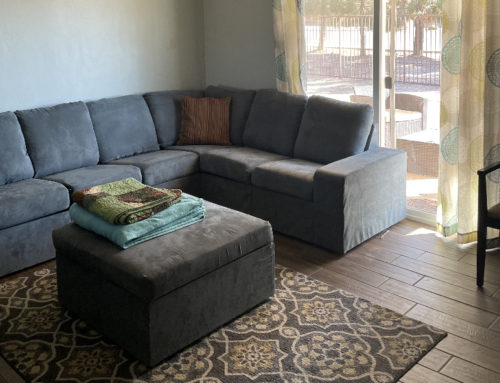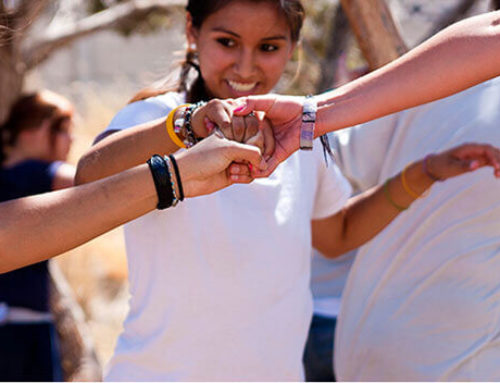DBT, or dialectical behavior therapy, is a form of cognitive-behavioral therapy (CBT) that teaches skills for those struggling with mental health disorders. Building on CBT, DBT provides opportunities for clients to participate in individual therapy along with group sessions to practice problem-solving skills and other skills training.
Within DBT there is a common analogy that helps introduce the stages of treatment to clients and families. This analogy is the DBT House of Therapy. Sunrise uses this concept to help girls and families understand the four different stages and how to use them as a guide to how they are doing or improving in their treatment.
What is the DBT House of Therapy?
Level 1: Basement
Level 2: First Floor
Level 3: Second Floor
Level 4: Roof
How does Sunrise use the DBT House of Therapy?
What is the DBT House of Therapy?
The DBT House of Therapy, sometimes referred to as the House of DBT, is essentially just that—a house. The DBT House consists of 4 levels, or stages:
- Basement
- First floor
- Second floor
- Roof
Each level represents stages of treatment and understanding each level is key for improvement and progress in treatment.
Level 1: Basement

-
Overview
In the DBT House of Therapy, the very bottom floor is the basement. If you picture the basement, it’s usually a place where there is a lot of fire and pain. It’s a difficult place where no one wants to be, but many of our clients find themselves stuck there.Those in the basement are usually ones who have suicidal thoughts or even suicide attempts. Self-harm is a regular behavior they engage in. They could be active in an eating disorder or substance abuse. These are examples of behaviors that keep people in the basement.
-
Challenges
The problem is that the basement feels like Hell. It can’t get any worse. So a lot of our clients will accept or at least try to accept they are in Hell. But being in Hell, there is no water or relief. In order to feel relief, they participate in behaviors that may temporarily mask their pain. This could consist of self-harming or other self-destructive behaviors.
-
What happens here?
Another way to describe level one is being out of control. They may participate in out of control behaviors which ultimately makes their life feel out of control. They aren’t functioning in daily life. The effect of their mental illness has taken over.
-
Common Behaviors
One of the common things we see with adolescents is that, in their mind, the illness or comes to define who they are. It’s hard for them to separate pathology and behavior from who they really are. It’s difficult to do because “I am my illness” has become their mantra for so long.
-
How does Sunrise help?
As a teenage girl struggling with mental health disorder(s) enters Sunrise, that is something that we focus on. We help her see what a life worth living looks like, and how we can help her get out of Hell. We will talk about that during therapy sessions.An individual therapist at Sunrise might believe it’s more painful to improve and get better than it is to stay in Hell. That is not effective or functional. It’s very painful to get out of hell. Our therapists guide these teen girls and their family members up the stairs out of the basement. These stairs are not ordinary stairs. They are hot metal that burns while you walk up. It will be painful every step of the way. It’s hard to feel any relief. Many will start up the stairs and then fall back down. That’s okay, it’s a common part of the treatment process.
Level 2: First Floor

-
Overview
Once they get out of the basement level, they notice it’s not as bad as Hell, but it’s still not comfortable. The floor is still kind of hot because you just came out of Hell and there’s still no water or sense of relief.
-
Challenges
They can’t get relief because the main thing that has changed in this stage is they have stopped a lot of out of control behaviors. Self-harming and suicidal behaviors are no longer happening.
-
What happens here?
With not having any water or relief, the client’s anxiety levels start to rise. They are not burning but they are exhausted. They actually get nervous because they have given up the things that have given them temporary relief. It wasn’t permanent relief because they were in Hell—but it was at least some relief.
-
Common Behaviors
Even families will experience their own anxiety. As their daughter improves, the roles in the family start to change and their anxiety as a whole goes up because they haven’t operated at this level before.
-
How does Sunrise help?
The goals in this stage are to reduce and eliminate behaviors that interfere with treatment. These behaviors could be inattentive treatment, refusing to see their therapist, or unwillingness to follow what their therapist suggests. Often these behaviors come up because they are having a lot of anxiety after giving up some of those life-interfering behaviors (such as substance abuse, self-harm, suicidality, eating disorders, etc). It gets in the way and they feel like they have no relief.
Level 3: Second Floor

-
Overview
As clients deal with some of those behaviors getting in the way, they move to level 3 which is the second floor of the House of DBT. This is where we really work the behaviors interfering with their quality of life.
-
Challenges
The challenges here are often poor relationships—not being well connected or being intimidated to get close to people. It’s scary for them.
-
What happens here?
As they are in this stage of treatment, the difference on this floor in the House of DBT is that there is actually water. Therefore, the client starts to find some relief. They learn coping skills and have been participating in DBT skills training which helps them find some relief. These skills include mindfulness, distress tolerance, emotion regulation, and interpersonal effectiveness.
-
Common Behaviors
However, as clients are learning to better manage their emotions, it’s not uncommon as they are coming from hell and moving to the next floors that they go back down to hell and then come back up.It’s also not uncommon in this second floor that they get up there and get some relief, and then they get nervous and scared because they get close to someone. Often it’s a life they’ve never quite lived, so there are a lot of unknowns that bring anxiety.
-
How does Sunrise help?
The DBT House of Therapy can be used as a form of art therapy, too. A Sunrise student drew her house of DBT and in the 3rd floor of her house she had relationships, soccer, and other things that were starting to replace some of those poor behaviors. She said when she’s close to people, that is what helps her not go back to Hell or participate in those behaviors.Want to participate in some art therapy of your own? Download this worksheet to help you illustrate your own House of DBT.
Level 4: Roof

-
Overview
The last floor in the DBT House of Therapy is the roof. Every house has a roof. If you think about the roof, the thing that makes it unique is that when you get on the roof, it’s great! The unique thing about the roof is, when you’re there, the view is amazing. Your perspective is changed.
-
Challenges
You are now open to every weather pattern that may come into your life. So at some point radical joy and acceptance has to take place. This is a difficult stage to get to and it takes time.
-
What happens here?
It’s essentially being able to accept the experiences and feelings that come into your life much like the rain or the sun. We experience pain and loss but we can also experience joy. Both exist and can co-exist for you. We don’t have to go back to those self-destructive behaviors in Hell.
-
Common Behaviors
Those on the roof have developed strong and healthy coping skills. They have learned how to accept pain and joy. They don’t participate in self-destructive behaviors anymore, but rather a sense of self-compassion and fulfillment in healthy relationships.
-
How does Sunrise help?
At Sunrise, we make sure that families and clients are oriented to these stages of treatment. If they ever wonder what kind of progress they are making at Sunrise, the House of DBT will show them where they are in the treatment process.
How does Sunrise use the DBT House of Therapy?
Many residential treatment centers have a level system and clients fall in the pattern of thinking that the level system tells them exactly where they are. A better guide is the stages of treatment with DBT and the DBT House of Therapy.
Sunrise is a residential treatment center serving adolescent girls and their families. We help girls ages 13-17 with emotional struggles, including depression, anxiety, eating disorders, borderline personality disorder (BPD), post-traumatic stress disorder (PTSD) , and self-injurious or suicidal behavior. Using evidence-based treatment, we help the whole family, not just the student, to learn and integrate DBT skills into their lives so that she can return home with coping skills that are positive and healthy.
The House of DBT is an exercise to help your daughter recognize her strengths, gain coping skills, strengthen her support system, and values. This intervention works to illustrate aspects of her life by bringing attention to strengths and supports while highlighting areas of growth.
Call us today to better understand how the DBT House of Therapy at Sunrise can help your daughter break free of self-destructive behaviors and get on a path toward a life worth living.




